Basic Pedal Guide:
Rock Tone Electric Guitar
For a those who want a richer, more controlled experience, a guide to three types of pedals a rock guitarist needs to achieve the most common and desired electric guitar tones.
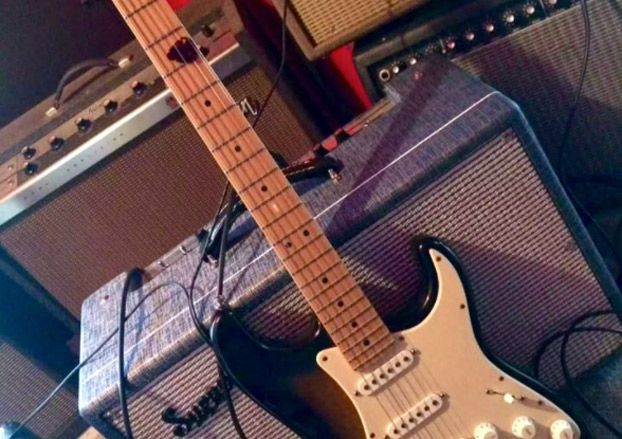
So you’ve got your guitar carefully selected and your amplifier has been delivered. Sure you can just plug in, kick on the dirty channel, and play, but you want a richer, more controllable tone. You may even want an echo or a phaser that your amp doesn’t simulate. While there are countless combinations of pedals that can be sequenced in dozens of orders in your signal chain, this will serve as a guide to three types of pedals a rock guitarist needs to achieve the most common and desired electric guitar tones.

Overdrive and Distortion Pedals
The first important pedal to invest in is an overdrive, distortion, or combination of the two. This converts your clean pickup tone into controlled chaos, a rich, powerful buzzing tone. Due to the sheer popularity and demand for overdrive/distortion there are so many options to choose from.
Here are two of our favorites:

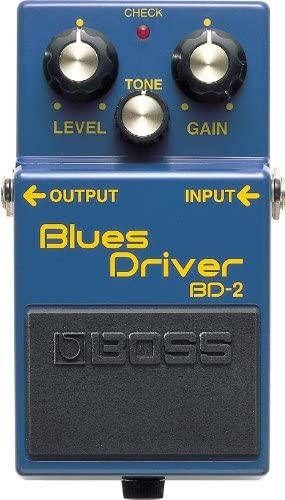
Boss
Blues Driver
The Boss Blues Driver is a wonderful pedal. It is inexpensive and yet has been used by amateurs and professionals alike. Because of its ability to recreate the tone of 1970s tube amps this has been used by Stevie Ray Vaughn, Joe Bonamassa, John Mayer, and so many more. The Blues Driver is easy to manipulate and packs a hell of a punch.
Start with the level at 10 o’clock, the tone just past 12 o’clock, and the gain around 3 o’clock and then dial it to your ear’s liking. Easily used for a volume boost for solos, many rock guitarists also leave the pedal engaged and control the boost with the guitar’s volume. This yields a cleaner sound with a slight bite that opens up into a fully driven sound when turned back up to ten.


Honorable Mention:
Fender
Pugilist Distortion
For those interested in a slightly different sound, the Fender Pugilist Distortion puts out a beautiful distorted signal and has more features such as A and B channels for two preset tones to switch between with a blend knob allowing you to mix both tones to varying degrees in either direction. Pretty sweet.

Phaser Pedals
By far the most well-known and popular in the guitar pedal world, distortion changed the world when The Beatles with the help of George Martin harnessed the power of overdrive and signal noise and put distortion on “Helter Skelter”, changing the sound of rock n’ roll guitar forever.
There is a wide variety of distortion pedals for different needs. Some are very general and classic, some address blues rock, metal, or indie rock concerns. No matter what they all use at least a three knob configuration of gain, volume/level, and tone/distortion, but some have six or more knobs for even more sonic control. Putting this after your overdrive increases your sonic flexibility. It’s your best candidate for a third pedal in your chain.

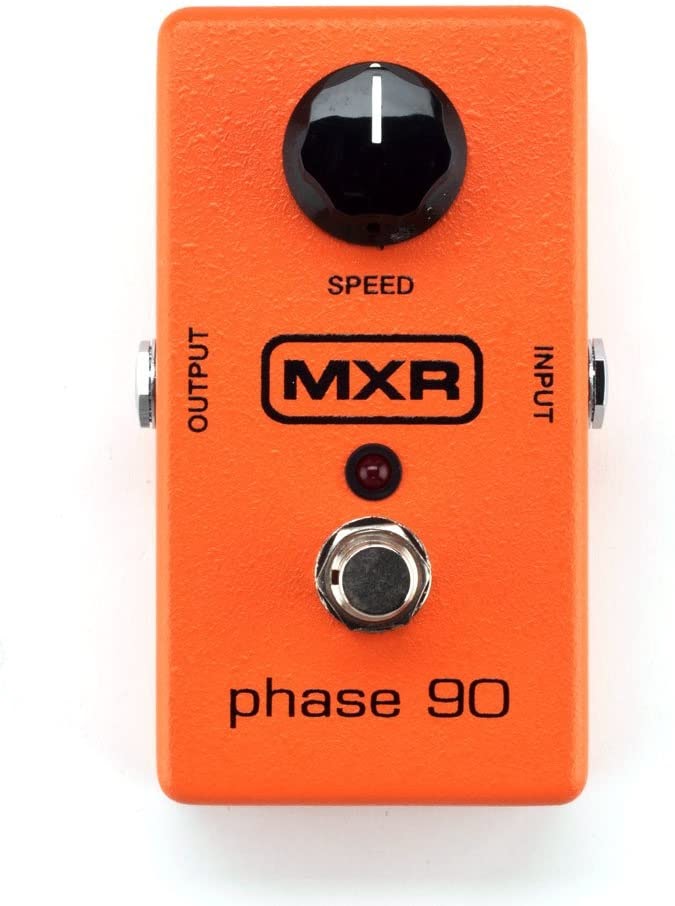
MXR
Phase 90
The most famous phaser is the one used by Eddie Van Halen himself and is called the MXR Phase 90. One knob that controls the speed of the sweeping swoosh makes it an extremely easy pedal to use, and a very useful one at that. A low phase speed allows for noticeable phasing, like in the example mentioned above. A medium speed (around 12 o’clock) takes us into psychedelic territory and after 3 o’clock the tone sounds more like a warble, and begins to sound like tremolo.
Putting it second in your signal chain is a safe place to put it, but remember there are no rules here and you should always play around with your chain’s sequence if not for any other reason than discovering how position changes the effect of every component.

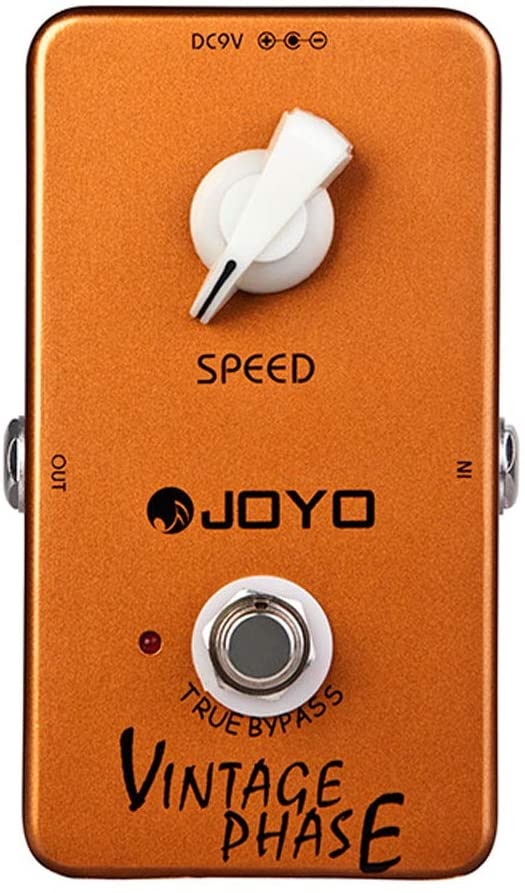
Honorable Mention:
Joyo
Vintage Phase
Maybe you want something that isn’t the industry standard, and we get that. It’s ok to be into the cool new brands and buy some fun cheaper pedals to integrate into your sound. The most affordable quality phaser is hands down the Joyo JF-06. It replicates 70s phasers pretty well and will allow you to spend more on a distortion or delay pedal.

Delay and Echo Pedals
Once you’ve got your distortion and a nice phaser to add a secret ingredient to the dirty signal’s timbre and tone, the next thing to think about is manipulating the signal in time. To do this there are a plethora of delay and echo pedals designed to achieve different effects.
Delay is an effect which samples your guitar’s signal and plays the “snapshots” back based on time parameters you set on the pedal. It’s like echo on command, except you get to choose with the twist of a knob whether the echo is coming from the back of a hallway or the grand canyon.
Echo pedals work a little differently. An echo pedal replicates the exact signal sample and has more immediacy. Some even replicate the 20th century technique of spring reverb, actually sampling the sound of the original signal reverberating through a chamber with a spring inside. The most popular echo (again due to Eddie Van Halen) is the Dunlop Echoplex.

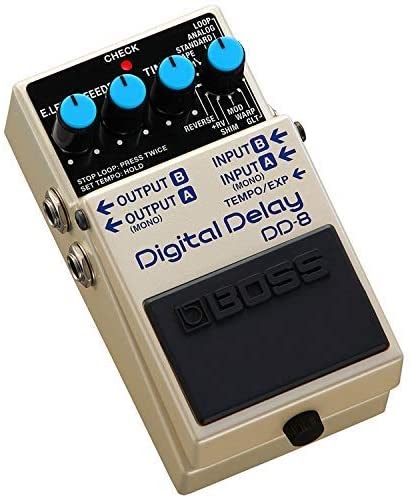
BOSS
Digital Delay
We suggest starting with a delay pedal because echo is a subset of the delay effect and a powerful pedal, such as the Boss DD-8, has more parameters, more variables, and way more you can do with it.

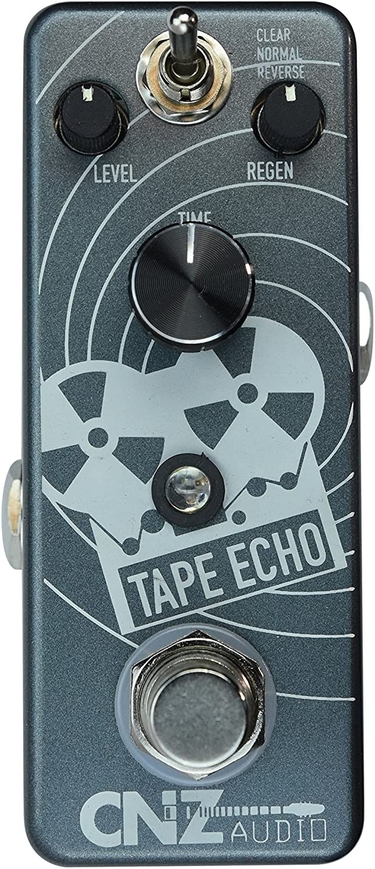
CnZ Audio
Tape Echo
But for those interested in echo, but also want to avoid industry standard Echoplex, we suggest this affordable CNZ Audio Tape Echo. It sounds good and has that modern-vintage feel some guitarists love right now.

A Final Word On This Guide:
As stated at the outset, this is BY NO MEANS a complete overview of the possible types of pedals your rock pedalboard can house, but merely the beginning. There is so much more to explore within and beyond just these three types of effects. But once you have selected the overdrive/distortion, phaser, and delay/echo you like, you can then consider pedals like a wah, an octave pedal, or one that improves upon effects your amp already has like reverb and EQ. The field is wide, now plug in and experiment!
